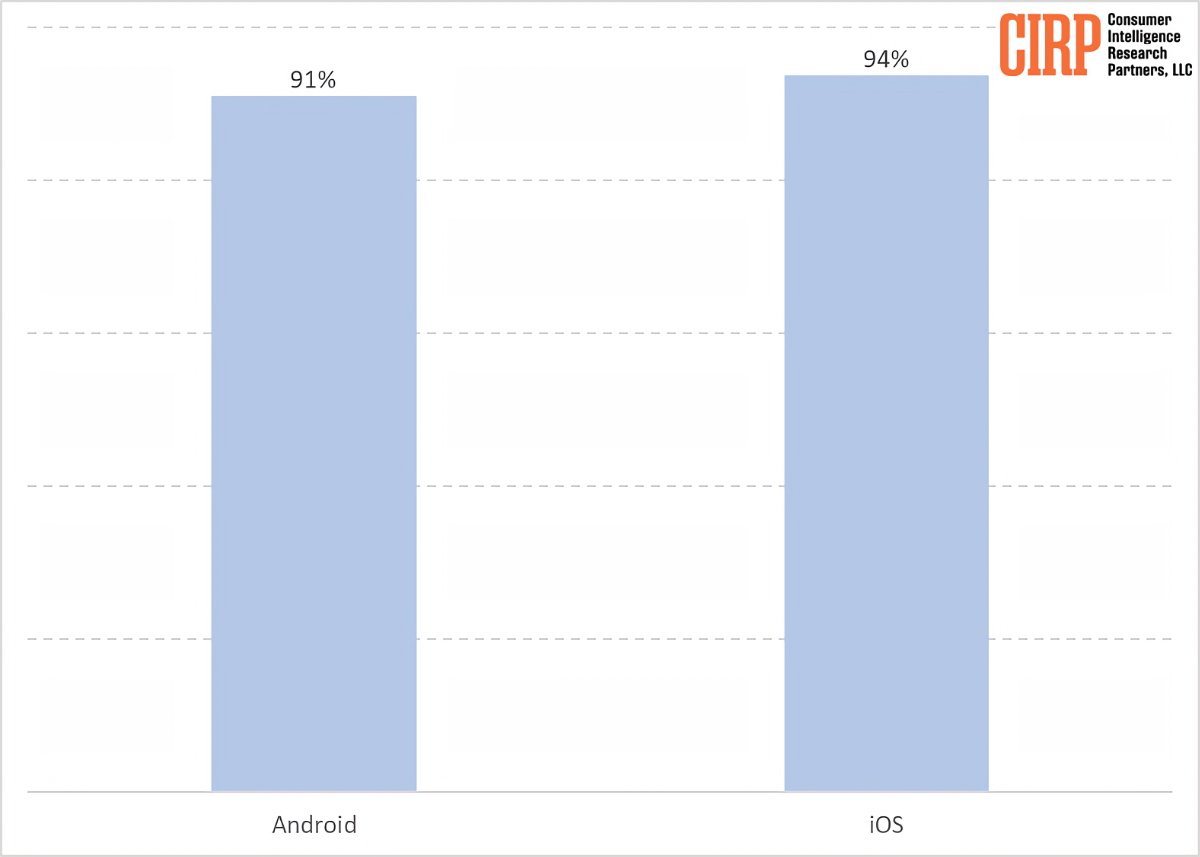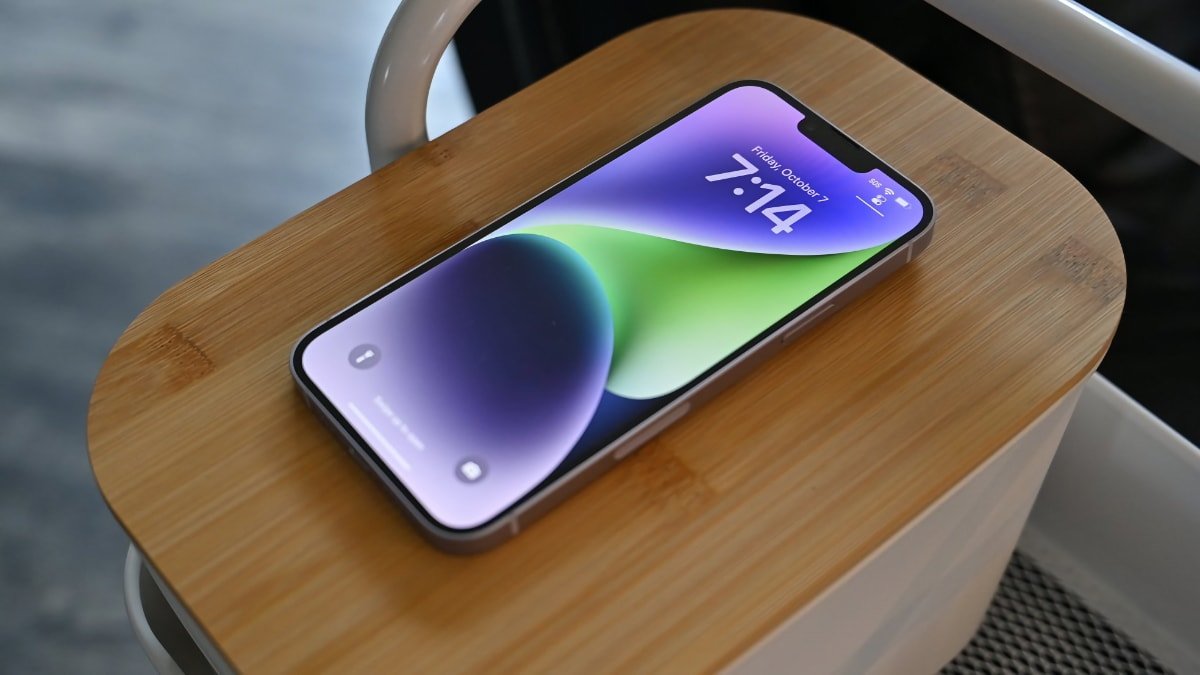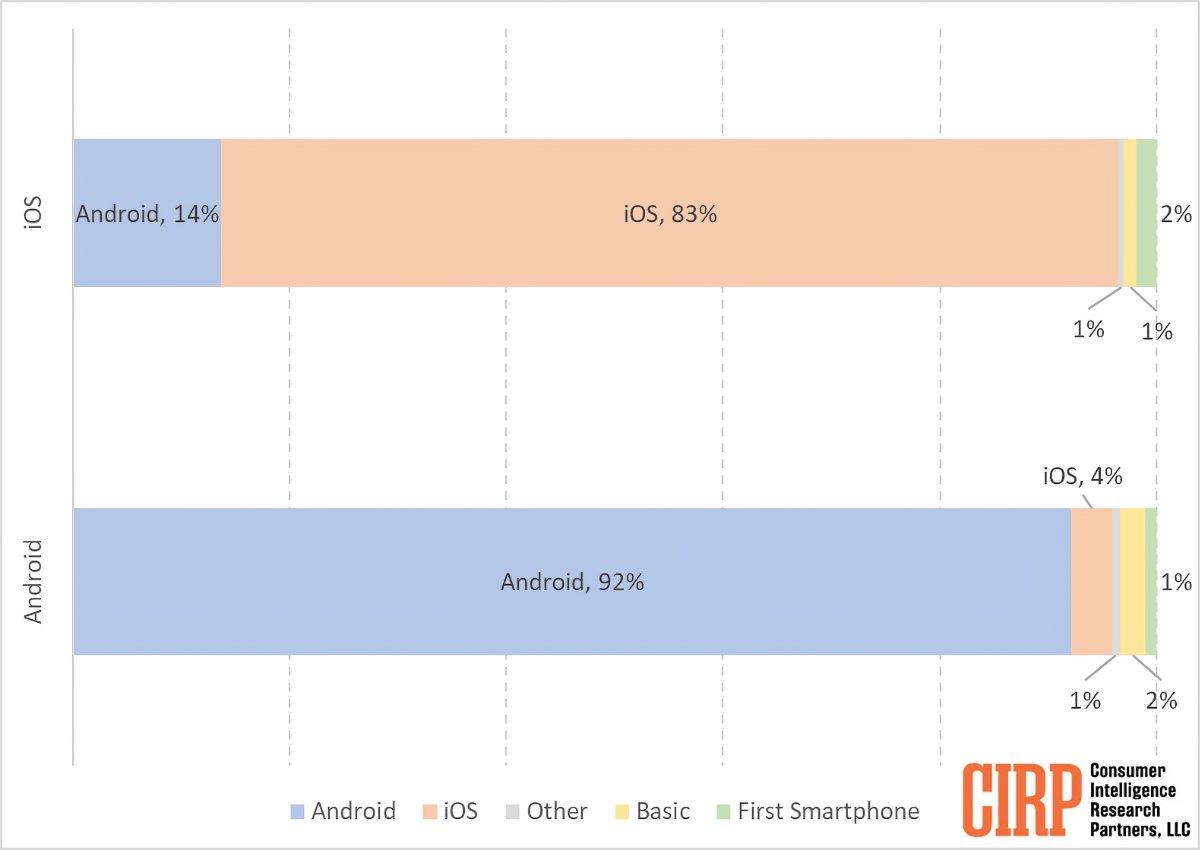While there is a small number of iPhone users who switch to Android, iPhone owners have a greater level of brand loyalty compared to Android users.
In the past decade, there has been an increasing trend among Android users to switch to iPhones. For example, people with a specific reason to switch cited battery life or connectivity issues.
With their newest report, Consumer Intelligence Research Partners (CIRP) have examined the issue from a different angle to collect data on people who switch in both directions.
 Percentage of customers remaining with Apple iOS and Google Android when Activating a New Smartphone
Percentage of customers remaining with Apple iOS and Google Android when Activating a New SmartphoneWhen examining the current user bases, iOS and Android demonstrate impressive customer loyalty, with over 90% of users sticking with their respective operating systems when upgrading to a new phone. However, iOS has a slightly higher commitment at 94%, while Android owners maintain a loyalty rate of 91%.
On the flip side, the question arises about where new buyers of iOS and Android smartphones originate. The data indicates that Apple has a greater ability to entice Android users to switch over, while Android struggles to attract users who are already loyal to iOS.
During the latest twelve-month period, approximately 14% of individuals who purchased an Apple iPhone had previously owned an Android smartphone. In contrast, only 4% of Android buyers had switched from an iPhone.
A small fraction, less than 5%, of buyers for both platforms consisted of customers transitioning from discontinued operating systems, those with basic or flip phones, or individuals purchasing their first-ever smartphone.
As a result, while both operating systems benefit from impressive customer loyalty, the iPhone takes the lead by a significant margin.
 Andrew Orr
Andrew Orr





-xl-m.jpg)


-m.jpg)






 Wesley Hilliard
Wesley Hilliard
 Christine McKee
Christine McKee
 Amber Neely
Amber Neely
 William Gallagher
William Gallagher
 Malcolm Owen
Malcolm Owen

 Mike Wuerthele
Mike Wuerthele








3 Comments
About 4 times more Android phones ship per year vs iPhones (both in the US and globally), which has been consistent for years. That means the 4% of new Android sales that are from former iPhone users represents about 16% of iPhone units shipped. That basically means the number of switchers in both directions is essentially identical within the margin of error.